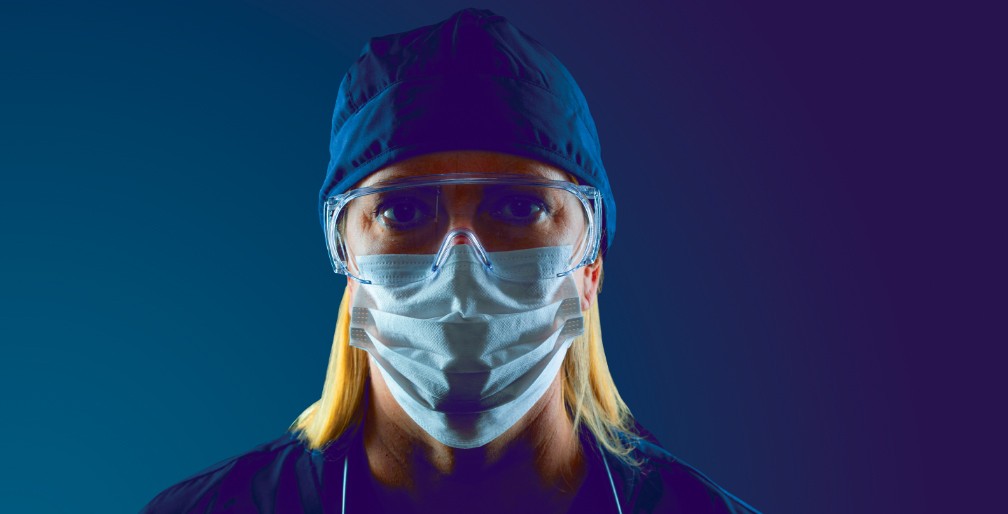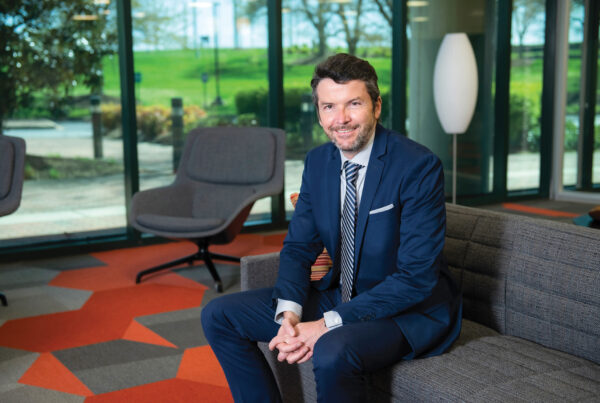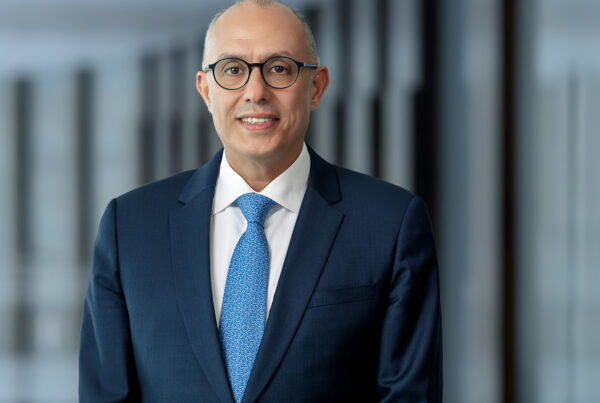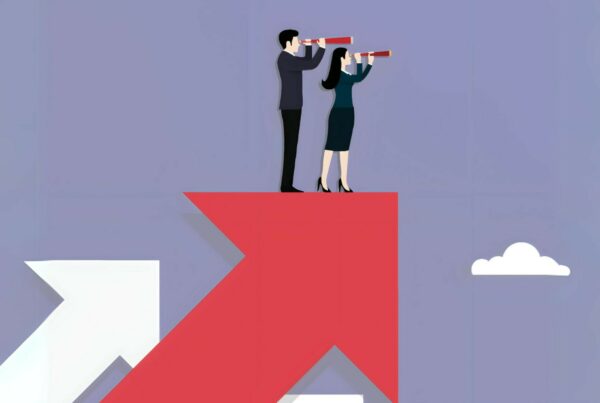The pivot began early at Eli Lilly and Co.
The 144-year-old pharmaceutical giant has a storied history of meeting a crisis with rapid-fire innovation. And its leaders were determined to do the same with COVID-19.
By February, the company had already mounted a humanitarian response to the novel coronavirus, holding true to its long-held belief that Lilly had a responsibility to act not only for its shareholders, but to patients and providers worldwide. And by March 9—before many U.S. states instituted lockdown orders—the company had instituted social distancing measures, severely restricted business travel and instructed most of its 34,000 employees in 55 countries to work from home.
As the virus tore through China, Dr. Dan Skovronsky, the company’s chief scientific officer, pored over scientific literature and reports and mapped out a two-pronged approach. Lilly’s actions and the thinking underpinning them offer C-suite leaders a blueprint for adapting amid a crisis.
Attack From All Angles
The first order of business: join forces with other companies to meet the unprecedented challenges of the global pandemic. On March 12, Lilly joined forces with Canadian biotech firm AbCellera. Armed with a blood sample from one of the first U.S. patients infected with the virus, the two companies are out to develop antibody products that could prevent COVID-19. And the goal was just as audacious: slash development time from years to months.
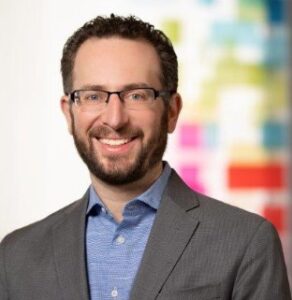 More high-profile collaborations would quickly follow. That includes the extraordinary cross-industry alliance of 17 life science companies spearheaded by The Bill and Melinda Gates Foundation aimed at accelerating the development, manufacturing and delivery of vaccines, diagnostics and treatments for COVID-19. Not long after, the company also partnered with Shanghai-based Junshi Biosciences to co-develop antibody therapies.
More high-profile collaborations would quickly follow. That includes the extraordinary cross-industry alliance of 17 life science companies spearheaded by The Bill and Melinda Gates Foundation aimed at accelerating the development, manufacturing and delivery of vaccines, diagnostics and treatments for COVID-19. Not long after, the company also partnered with Shanghai-based Junshi Biosciences to co-develop antibody therapies.
At the same time, Lilly began ramping up COVID-19 testing in its own backyard: Indianapolis, Indiana, where Lilly employs nearly a third of its workers. Like many others in the U.S., the state was struggling to acquire the materials required for testing. “Every step of the way, we hit these tremendous bottlenecks,” Mr. Skovronsky says. So Lilly leaned into its sweeping supply chain and global reach, tapping into the company’s extensive resources and experience to help solve the problem.
The company next set up a drive-thru clinic on March 23 for essential workers and was testing nearly 2,000 people a day by mid-April. But it did not stop there. Seeing other labs “locked into one platform,” Lilly stepped in to offer its expertise.
“We don’t have those kinds of constraints. We’ve engineered around all of those problems,” says Mr. Skovronsky. So the company began “shifting our mission a little bit from just providing testing at our facilities to teaching others and creating other labs to take on this important work.”
“Our business has never felt more real or more important.” —Dr. Dan Skovronsky, Chief Science Officer, Eli Lilly and Co.
Innovation on Demand
Mr. Skovronsky is the tenth head of R&D at Lilly, adding a new chapter to the company’s established track record in innovating through a global crisis. One of his predecessors, Dr. George Henry Alexander Clowes, Lilly’s first research director, led Lilly to first mass-produce insulin for people with diabetes. During World War II, Lilly scientists went to England and figured out how to industrialize penicillin manufacturing, delivering the drug to U.S. troops, a move that likely contributed to the Allies winning the war. Lilly was also the largest producer of the smallpox vaccine.
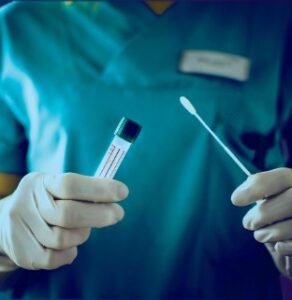 At any given time, Lilly has a number of drugs and therapies in its development pipeline. Business leaders and scientists there have made big bets on fighting everything from Alzheimer’s to cancer. But the novel coronavirus presents an unprecedented global disruption, forcing Lilly—and all companies—to navigate uncharted waters.
At any given time, Lilly has a number of drugs and therapies in its development pipeline. Business leaders and scientists there have made big bets on fighting everything from Alzheimer’s to cancer. But the novel coronavirus presents an unprecedented global disruption, forcing Lilly—and all companies—to navigate uncharted waters.
Mr. Skovronsky himself had to make some dramatic changes to how he spent his time. Working from home at the time of this interview, he says he’s tried to clear his calendar, for the most part, every day.
“I’m responding not to things that were scheduled two weeks ago, but I’m spending my time dealing with the things that need to happen today based on new developments on the ground. Click To TweetAnd almost every day, there’s a new crisis or opportunity to help that I need to be involved in. That’s a very different pace,” Mr. Skovronsky says. “What that means, though, is that my employees—when they need a decision or they need help on something—know that I’m going to help them that same day, probably within a few hours, rather than ‘Let’s wait for the monthly meeting where we make decisions on project X.’”
Lilly is currently developing three coronavirus therapies. “If we can be successful here, that could be another moment in our history that we can reflect on and be proud of,” Mr. Skovronsky says. “Success isn’t guaranteed, though. There’s a lot of work to do before we can write that next chapter in the history of human health.”
The company has not let up on other areas of R&D, either, continuing to look for innovative solutions in cancer, Alzheimer’s and diabetes. “This is what we do, and every once in a while, there’s a huge breakthrough that can help us help other people,” he says. “It’s a privilege. We’re in the best business in the world.”
And even as Lilly shifted its present-term focus on coronavirus, the company kept a close eye on its supply chain for essential medicines, such as insulin, and kept manufacturing partners around the world operational. It also lowered the price of Lilly insulin for U.S. patients to $35 as a way to help people weather the economic downturn.
“Our business has never felt more real or more important,” Mr. Skovronsky says. “We create medicines that help make people feel better. So when we see a global health care crisis like we’re in today, it’s natural that companies like Lilly will respond. We come to work every day looking to see how we can help sick people get better.”


